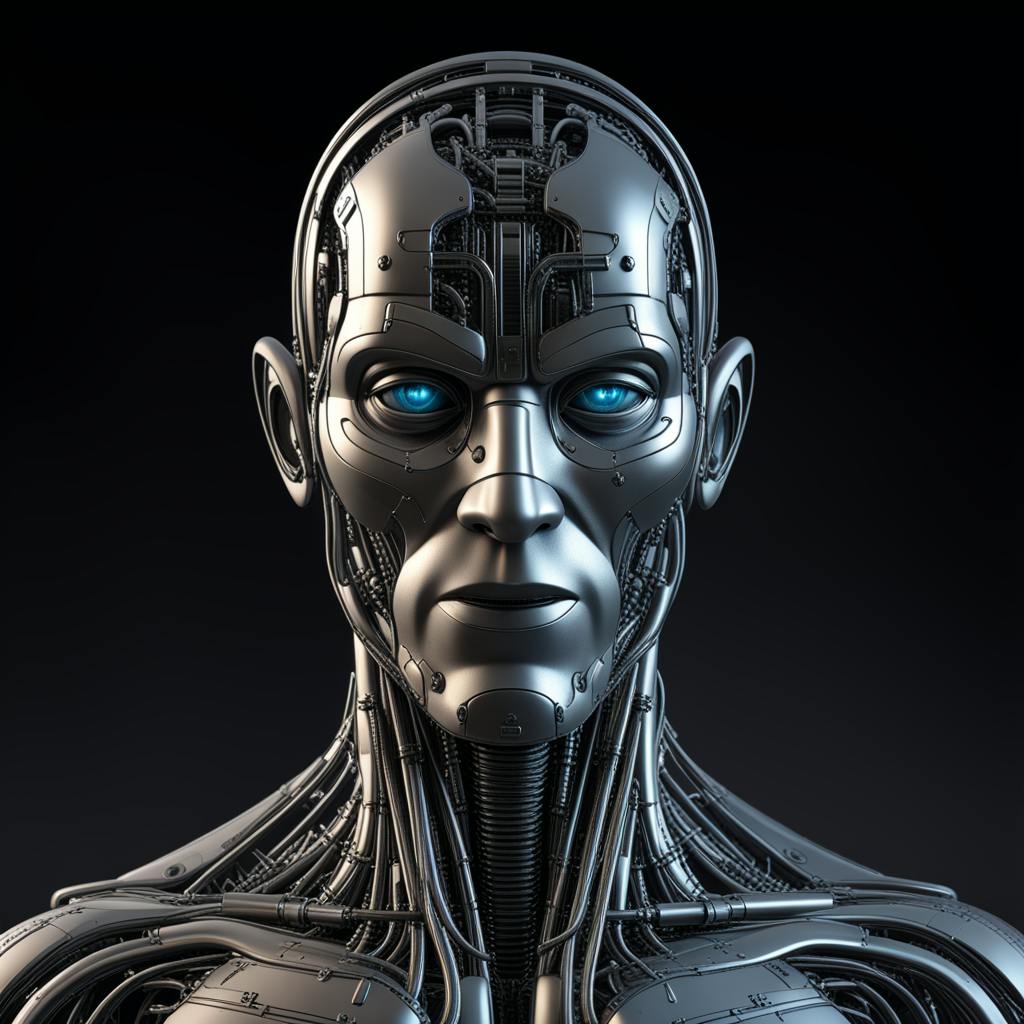In the digital age, where smartphones and smart devices are ubiquitous, Natural Language Processing (NLP) emerges as a pivotal force driving seamless interactions between humans and computers. NLP applications such as chatbots, sentiment analysis, machine translation, and voice recognition systems have transformed the way we communicate with technology. By enabling machines to understand and respond to human language with high accuracy, NLP has revolutionized human-computer interactions, providing more personalized and efficient experiences for users across various platforms.
Natural Language Processing Applications
Natural Language Processing is a subset of artificial intelligence that allows computers to interpret, generate, and respond to human languages. One of its primary applications is in chatbots, used extensively in customer service to handle inquiries, provide product recommendations, and solve basic issues without human intervention. Additionally, voice assistant technologies like Siri, Alexa, and Google Assistant leverage NLP to perform tasks, set reminders, and answer questions, fundamentally changing our interaction with devices.
Sentiment analysis is another critical NLP application, particularly prevalent in social media monitoring, enabling companies to gauge public opinion about brands, products, or events by analyzing online comments and reviews. Furthermore, machine translation tools like Google Translate utilize NLP to break down linguistic barriers, facilitating global communication and understanding.
Exploration of Key Points
NLP applications offer compelling advantages, primarily in efficiency and personalization. For instance, chatbots can handle thousands of inquiries simultaneously, providing 24/7 customer service that is both immediate and reliable. These interactions are enhanced by systems' ability to learn from user interaction patterns, resulting in increasingly tailored responses.
Voice recognition systems allow hands-free interactions, catering to busy or differently-abled users by simplifying tasks through spoken commands. Moreover, sentiment analysis tools provide businesses with actionable insights, driving marketing strategies and product development through a deeper understanding of consumer attitudes.
Machine translation not only aids casual users in chatting with friends worldwide or understanding foreign content but also supports businesses in crafting accurate multilingual communications, thus fostering international collaboration and commerce.

AI made with Christophe Vacher
Support with Facts and Examples
The success of NLP hinges on advancements in deep learning and big data. For instance, OpenAI's GPT models have shown remarkable abilities in generating human-like text, underscoring the potential of NLP in content creation and beyond. Similarly, major advancements are seen with BERT (Bidirectional Encoder Representations from Transformers), which has set new standards in understanding the context of words in relation to all the other words in a sentence.
Moreover, credible studies have demonstrated the retention and satisfaction rates improvements in companies that incorporate NLP-driven chatbots within their customer support operations. In the realm of healthcare, NLP applications are also employed to analyze clinical notes, streamlining patient care and enhancing medical research.
Narrative and Answers to FAQs
People often ask how NLP applications differ from simple keyword recognition. The answer lies in the NLP systems' ability to parse the complexity of human language—understanding not just words but context, sentiment, and intent, thus offering a more nuanced interaction.
Businesses and individuals gravitate towards NLP applications for personal assistants or translation because of their ability to handle complex tasks more affordably and efficiently than humans in many instances. However, questions about data privacy and ethical use remain pertinent; as technology evolves, ensuring robust data protection measures is imperative.
FAQ Article: Natural Language Processing Applications in Human-Computer Interaction
What are some key applications of natural language processing in human-computer interactions?
Natural Language Processing (NLP) is a pivotal component in enabling intuitive, efficient, and intelligent human-computer interactions. Key applications include:
- Conversational Agents and Chatbots: NLP powers virtual assistants and chatbots, enabling them to understand and respond to user queries with meaningful and context-aware information, streamlining customer service and user engagement.
- Speech Recognition: NLP transforms spoken language into text, making technologies like digital assistants (e.g., Siri, Google Assistant, and Alexa) possible, allowing for hands-free operation and accessibility enhancements.
- Machine Translation: With NLP, systems can automatically translate text between languages, breaking down language barriers in real-time communication platforms.
- Sentiment Analysis: This application helps businesses understand customer opinions and feelings regarding products and services by analyzing text from social media, forums, and reviews.
- Text Summarization: NLP algorithms can distill large volumes of content into concise summaries, allowing users to quickly grasp the essence of lengthy documents or articles.
- Information Retrieval and Search Engines: NLP improves search engine capabilities by understanding user intent and context, resulting in more relevant and precise search results.
How is natural language processing revolutionizing the field of human-computer interactions?
NLP is revolutionizing human-computer interactions by:
- Enhancing Accessibility: NLP tools like speech-to-text and text-to-speech aid individuals with disabilities, allowing more inclusive access to digital content.
- Reducing Language Barriers: Real-time language translation facilitates communication across diverse linguistic backgrounds, promoting global collaboration.
- Improving User Experience: By enabling computers to understand and respond in human-like ways, NLP creates more natural and seamless interactions between humans and machines.
- Automating Routine Tasks: NLP-driven automation in customer service and other fields reduces human workload on repetitive tasks, allowing for more focus on complex decision-making roles.
- Personalizing User Services: NLP allows technology to interpret individual user preferences and behaviors, offering tailored experiences based on past interactions and gathered insights.

AI made with Christophe Vacher
What improvements in human-computer interactions can be attributed to natural language processing?
The primary improvements attributed to NLP include:
- Increased Efficiency: By understanding natural language, computers can perform tasks based on spoken commands or written input, minimizing time spent navigating complex interfaces.
- Greater Contextual Understanding: NLP allows systems to better understand nuances, slang, and ambiguous queries, leading to more accurate and relevant responses.
- Enhanced User Engagement: Interactive NLP applications make digital experiences more engaging and interactive, fostering better user engagement and satisfaction.
- Improved Decision Making: NLP facilitates the quick extraction and analysis of valuable insights from vast datasets, aiding in informed decision-making processes.
Can you give examples of how natural language processing is being applied in current technology to improve human-computer interactions?
Certainly, here are some real-world examples leveraging NLP to enhance human-computer interactions:
- Virtual Assistants: Apple's Siri, Amazon's Alexa, and Google's Assistant utilize NLP to interpret user commands, perform tasks, and provide information, making daily interactions more convenient and efficient.
- Customer Support Chatbots: Businesses deploy NLP-based chatbots to handle customer inquiries, resolve issues promptly, and alleviate the need for human intervention in routine service tasks.
- Language Learning Apps: Applications like Duolingo use NLP to provide real-time feedback and adaptive learning experiences, helping users learn new languages more effectively.
- Smart Home Devices: Devices like Google Nest and Amazon Echo integrate NLP to interact with users through natural language, enabling control over home environments with ease and personalization.
- Social Media Monitoring Tools: Tools such as Brandwatch and Mention employ NLP for sentiment analysis, enabling brands to comprehend public sentiment and respond appropriately.
By continuously evolving, NLP is set to further transform how humans interact with machines, making future interactions even more intuitive, efficient, and human-like.
Conclusion
Natural Language Processing stands at the forefront of enhancing human-computer interactions, offering applications that reshape the digital landscape. From chatbots to voice recognition and sentiment analysis to machine translation, NLP transforms user experiences into ones that are more natural, intuitive, and effective.
As innovation continues to unfold, its applications promise to further blur the lines between human and machine interaction, opening new avenues for connectivity and understanding. The future holds limitless potential for NLP to refine and expand its reach, fostering a world where technology truly speaks our language.

